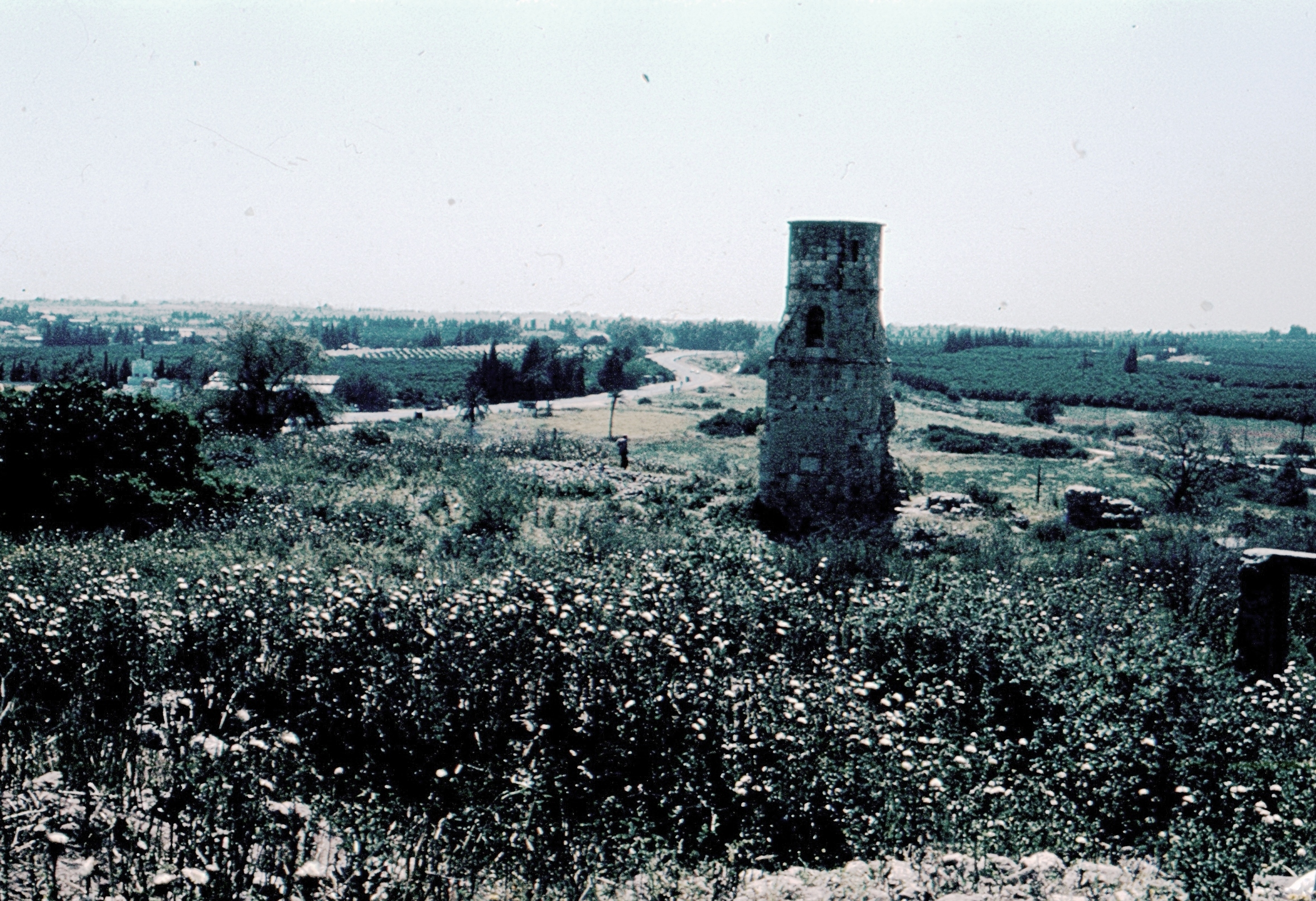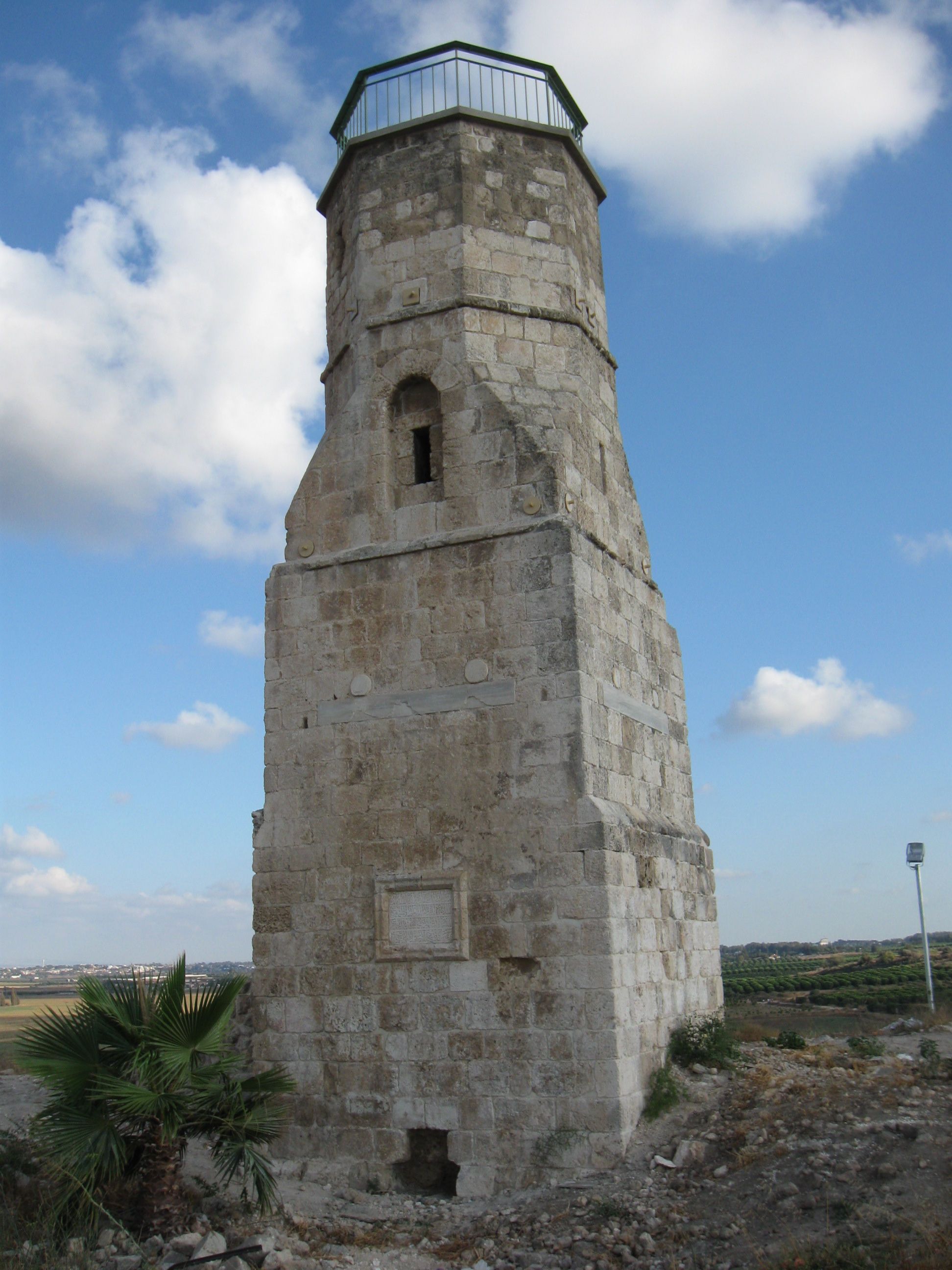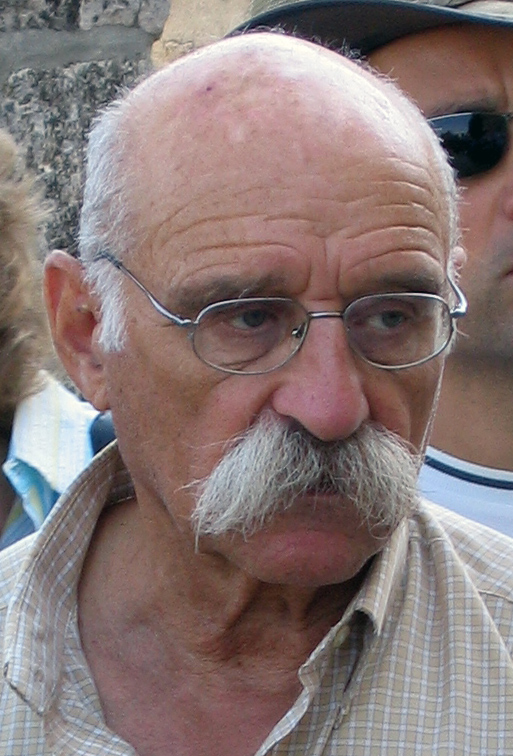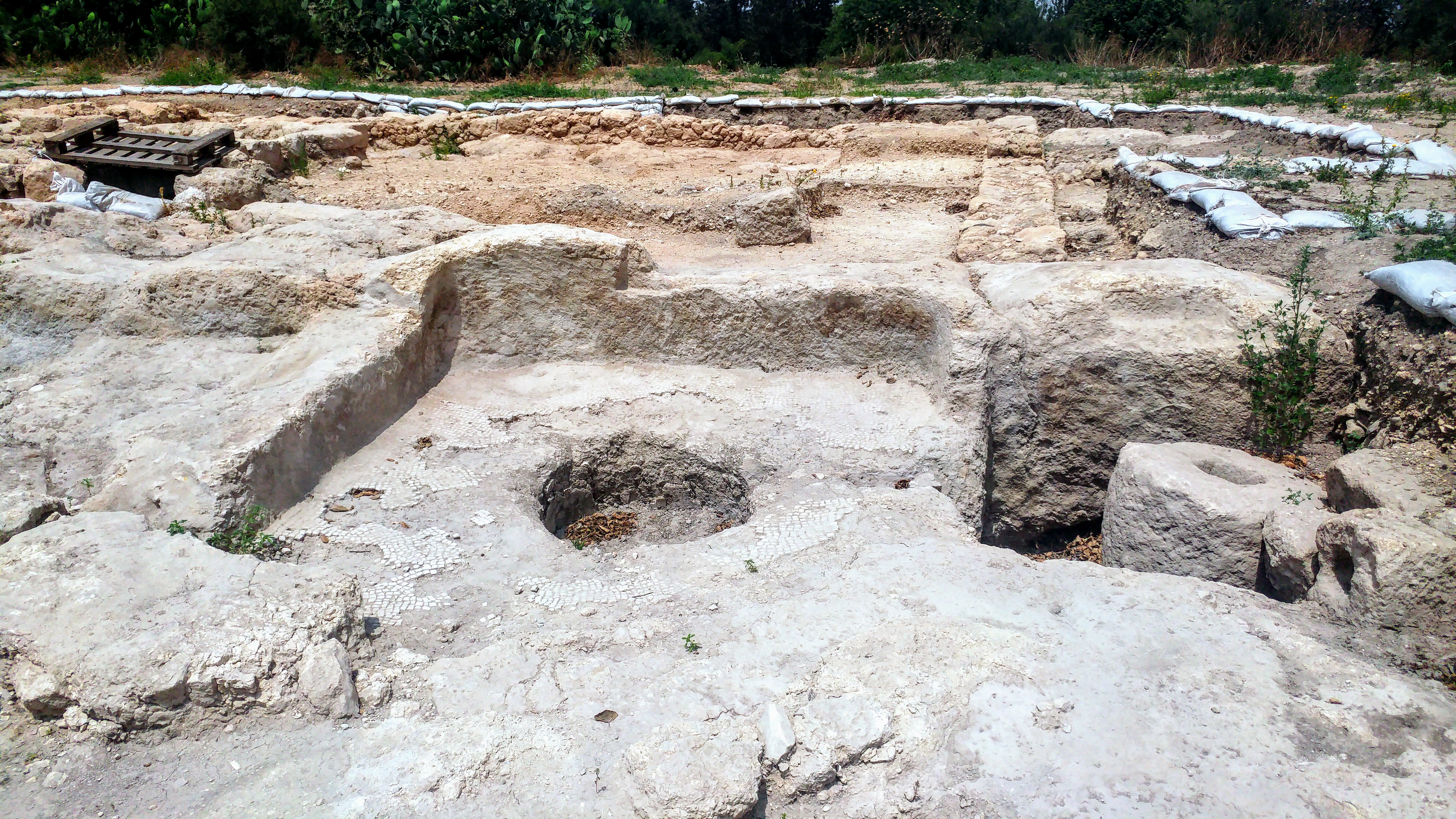|
Jabneh
Yavne ( he, יַבְנֶה) or Yavneh is a city in the Central District of Israel. In many English translations of the Bible, it is known as Jabneh . During Greco-Roman times, it was known as Jamnia ( grc, Ἰαμνία ''Iamníā''; la, Iamnia); to the Crusaders as Ibelin; and before 1948, as Yibna ( ar, يبنى). History Yavne was one of the major ancient cities in the southern coastal plain, situated south of Jaffa, north of Ashdod, and east of the Mediterranean.Moshe Fischer, Itamar Taxel and David AmitRural Settlement in the Vicinity of Yavneh in the Byzantine Period: A Religio-Archaeological Perspective Bulletin of the American Schools of Oriental Research, No. 350 (May, 2008), pp. 7-35. Excavations were carried out on the ancient tell (mound created by accumulation of archaeological remains) known as ''Tel Yavne'' (Hebrew), which developed on a natural kurkar_hill._The_tell_was_inhabited,_possibly_continuously,_from_either_the_Bronze_or_Iron_Age_until_the_Mandat ... [...More Info...] [...Related Items...] OR: [Wikipedia] [Google] [Baidu] |
Council Of Jamnia
The Council of Jamnia (presumably Yavneh in the Holy Land) was a council purportedly held late in the 1st century CE to finalize the canon of the Hebrew Bible. It has also been hypothesized to be the occasion when the Jewish authorities decided to exclude believers in Jesus as the Messiah from synagogue attendance, as referenced by interpretations of in the New Testament. The writing of the Birkat haMinim benediction is attributed to Shmuel ha-Katan at the supposed Council of Jamnia. The theory of a council of Jamnia that finalized the canon, first proposed by Heinrich Graetz in 1871, was popular for much of the 20th century. However, it was increasingly questioned from the 1960s onward, and the theory has been largely discredited. Background The Talmud relates that some time before the destruction of the Second Temple in 70 AD, Rabbi Yohanan ben Zakkai relocated to the city of Yavneh, where he received permission from the Romans to found a school of ''halakha'' (Jewish reli ... [...More Info...] [...Related Items...] OR: [Wikipedia] [Google] [Baidu] |
Yibna
Yibna ( ar, يبنى; ''Jabneh'' or ''Jabneel'' in Biblical times; ''Jamnia'' in Roman times; '' Ibelin'' to the Crusaders), or Tel Yavne is an archaeological site and depopulated Palestinian town. The ruins are located immediately southeast of the modern Israeli city of Yavne. The town had a population of 5,420 in 1948, located 15 kilometers southwest of Ramla.Khalidi, 1992, p.421 Yibna was taken by Israeli forces on 4 June 1948, and was depopulated during the military assault and expulsion. It is a significant site for post-biblical Jewish history, as it was the location of the Council of Jamnia, considered the birthplace of modern Rabbinic Judaism. It is also significant in the history of the Crusades, as the location of the House of Ibelin. Name In many English translations of the Bible, it is known as Yavne or Jabneh . During Greco-Roman times, it was known as Jamnia ( grc, Ἰαμνία ''Iamníā''; la, Iamnia); to the Crusaders as Ibelin; and before 1948, as Yibna ( ar ... [...More Info...] [...Related Items...] OR: [Wikipedia] [Google] [Baidu] |
Yavne 599
Yavne ( he, יַבְנֶה) or Yavneh is a city in the Central District of Israel. In many English translations of the Bible, it is known as Jabneh . During Greco-Roman times, it was known as Jamnia ( grc, Ἰαμνία ''Iamníā''; la, Iamnia); to the Crusaders as Ibelin; and before 1948, as Yibna ( ar, يبنى). History Yavne was one of the major ancient cities in the southern coastal plain, situated south of Jaffa, north of Ashdod, and east of the Mediterranean.Moshe Fischer, Itamar Taxel and David AmitRural Settlement in the Vicinity of Yavneh in the Byzantine Period: A Religio-Archaeological Perspective Bulletin of the American Schools of Oriental Research, No. 350 (May, 2008), pp. 7-35. Excavations were carried out on the ancient tell (mound created by accumulation of archaeological remains) known as ''Tel Yavne'' (Hebrew), which developed on a natural kurkar_hill._The_tell_was_inhabited,_possibly_continuously,_from_either_the_Bronze_or_Iron_Age_until_the_Mandator ... [...More Info...] [...Related Items...] OR: [Wikipedia] [Google] [Baidu] |
Yavne-Yam
Yavne-Yam ( he, יבנה ים, also spelled Yavneh-Yam, literally Yavne-Sea) or Minet Rubin (Arabic, literally Port of Rubin, referring to biblical Reuben; el, Ἰαμνιτῶν Λιμήν) is an archaeological site located on Israel's Southern Coastal Plain, about 15 km south of Tel Aviv. Built on eolianite hills next to a small promontory forming the sole anchorage able to provide shelter to seagoing vessels between Jaffa and the Sinai, Yavne-Yam is notable for its role as the port of ancient Yavne. Excavations carried out by Tel Aviv University since 1992 have revealed continuous habitation from the second millennium BCE up to the Middle Ages; the famous Yavne-Yam ostracon is named after the site. History Bronze and Iron Ages Surveys and excavations undertaken at Yavne-Yam during the 1950s and 1960s have revealed the existence of a large fortified site, consisting of a square enclosure with freestanding ramparts and marked by fortified gates, dating from the Middle and ... [...More Info...] [...Related Items...] OR: [Wikipedia] [Google] [Baidu] |
Hebrew Bible
The Hebrew Bible or Tanakh (;"Tanach" ''Random House Webster's Unabridged Dictionary''. Hebrew: ''Tānāḵh''), also known in Hebrew as Miqra (; Hebrew: ''Mīqrā''), is the Biblical canon, canonical collection of Hebrew language, Hebrew scriptures, including the Torah, the Nevi'im, and the Ketuvim. Different branches of Judaism and Samaritanism have maintained different versions of the canon, including the 3rd-century Septuagint text used by Second-Temple Judaism, the Syriac language Peshitta, the Samaritan Torah, the Dead Sea Scrolls, and most recently the 10th century medieval Masoretic Text, Masoretic text created by the Masoretes currently used in modern Rabbinic Judaism. The terms "Hebrew Bible" or "Hebrew Canon" are frequently confused with the Masoretic text, however, this is a medieval version and one of several ... [...More Info...] [...Related Items...] OR: [Wikipedia] [Google] [Baidu] |
Dan Bahat
Dan Bahat ( he, דן בהט, born 1938) is an Israeli archaeologist especially known for his excavations in Jerusalem , particularly at the Western Wall tunnels. Biography Dan Bahat was born in Poland to parents who were citizens of Mandatory Palestine.Dan Bahat: Curriculum vitae Bar-Ilan University The family moved to in 1939 and became Israeli citizens in 1952. He served in the IDF from 1956 to 1958. In 1964 he gained a |
Philistine
The Philistines ( he, פְּלִשְׁתִּים, Pəlīštīm; Koine Greek (LXX): Φυλιστιείμ, romanized: ''Phulistieím'') were an ancient people who lived on the south coast of Canaan from the 12th century BC until 604 BC, when their polity, after having already been subjugated for centuries by the Neo-Assyrian Empire, was finally destroyed by King Nebuchadnezzar II of the Neo-Babylonian Empire. After becoming part of his empire and its successor, the Persian Empire, they lost their distinct ethnic identity and disappeared from the historical and archaeological record by the late 5th century BC.. The Philistines are known for their biblical conflict with the Israelites. Though the primary source of information about the Philistines is the Hebrew Bible, they are first attested to in reliefs at the Temple of Ramses III at Medinet Habu, in which they are called (accepted as cognate with Hebrew ); the parallel Assyrian term is , , or . Etymology The English term ' ... [...More Info...] [...Related Items...] OR: [Wikipedia] [Google] [Baidu] |
Bronze Age
The Bronze Age is a historic period, lasting approximately from 3300 BC to 1200 BC, characterized by the use of bronze, the presence of writing in some areas, and other early features of urban civilization. The Bronze Age is the second principal period of the three-age system proposed in 1836 by Christian Jürgensen Thomsen for classifying and studying ancient societies and history. An ancient civilization is deemed to be part of the Bronze Age because it either produced bronze by smelting its own copper and alloying it with tin, arsenic, or other metals, or traded other items for bronze from production areas elsewhere. Bronze is harder and more durable than the other metals available at the time, allowing Bronze Age civilizations to gain a technological advantage. While terrestrial iron is naturally abundant, the higher temperature required for smelting, , in addition to the greater difficulty of working with the metal, placed it out of reach of common use until the end o ... [...More Info...] [...Related Items...] OR: [Wikipedia] [Google] [Baidu] |
Iron Age
The Iron Age is the final epoch of the three-age division of the prehistory and protohistory of humanity. It was preceded by the Stone Age (Paleolithic, Mesolithic, Neolithic) and the Bronze Age (Chalcolithic). The concept has been mostly applied to Iron Age Europe and the Ancient Near East, but also, by analogy, to other parts of the Old World. The duration of the Iron Age varies depending on the region under consideration. It is defined by archaeological convention. The "Iron Age" begins locally when the production of iron or steel has advanced to the point where iron tools and weapons replace their bronze equivalents in common use. In the Ancient Near East, this transition took place in the wake of the Bronze Age collapse, in the 12th century BC. The technology soon spread throughout the Mediterranean Basin region and to South Asia (Iron Age in India) between the 12th and 11th century BC. Its further spread to Central Asia, Eastern Europe, and Central Europe is somewhat dela ... [...More Info...] [...Related Items...] OR: [Wikipedia] [Google] [Baidu] |
Israel Antiquities Authority
The Israel Antiquities Authority (IAA, he, רשות העתיקות ; ar, داﺌرة الآثار, before 1990, the Israel Department of Antiquities) is an independent Israeli governmental authority responsible for enforcing the 1978 Law of Antiquities. The IAA regulates excavation and conservation, and promotes research. The Director-General is Mr. Eli Escusido, and its offices are housed in the Rockefeller Museum. The Israel Antiquities Authority plans to move into a new building for the National Campus for the Archaeology of Israel in Jerusalem, next to the Israel Museum. History The Israel Department of Antiquities and Museums (IDAM) of the Ministry of Education was founded on July 26, 1948, after the establishment of the State of Israel. It took over the functions of the Department of Antiquities of the British Mandate in Israel and Palestine. Originally, its activities were based on the British Mandate Department of Antiquities ordinances. IDAM was the statutory aut ... [...More Info...] [...Related Items...] OR: [Wikipedia] [Google] [Baidu] |
Usha (ancient)
Usha () was a city in the Western part of Galilee. The Arab village of Hawsha later occupied the ruins of the old site. The modern kibbutz of Usha, Israel is located nearby to the ruins. History The site came to renown in the 2nd century (c. 135), after the Hadrianic persecutions, when the Sanhedrin, or rabbinic court, was moved from Yavne in Judea to Usha, and then from Usha back to Yavne, and a second time from Yavne to Usha.Simon, Maurice, ed. (1990). ''Hebrew-English Edition of the Babylonian Talmud (Seder Moed), Rosh Hashanah, Beẓah, Sheḳalim''. The Soncino Press: London, s.v. ''Rosh Hashanah'' 31b (note 6, citing Horowitz, ''Palestine'', p.34) The Sanhedrin is thought to have continued there until it was dissolved during the reign of Verus, and re-established in Shefar'am under Marcus Aurelius. The final settlement in Usha indicates the ultimate spiritual supremacy of Galilee over Judea, the latter having become depopulated after the Second Jewish Revolt. Usha was al ... [...More Info...] [...Related Items...] OR: [Wikipedia] [Google] [Baidu] |
Sanhedrin
The Sanhedrin (Hebrew and Aramaic: סַנְהֶדְרִין; Greek: , ''synedrion'', 'sitting together,' hence 'assembly' or 'council') was an assembly of either 23 or 71 elders (known as "rabbis" after the destruction of the Second Temple), appointed to sit as a tribunal in every city in the ancient Land of Israel. There were two classes of Rabbinite Jewish courts which were called Sanhedrin, the Great Sanhedrin and the Lesser Sanhedrin. A lesser Sanhedrin of 23 judges was appointed to sit as a tribunal in each city, but there was only supposed to be one Great Sanhedrin of 71 judges, which among other roles acted as the Supreme Court, taking appeals from cases which were decided by lesser courts. In general usage, ''the Sanhedrin'' without qualifier normally refers to the Great Sanhedrin, which was presided over by the ''Nasi'', who functioned as its head or representing president, and was a member of the court; the ''Av Beit Din'' or the chief of the court, who was second to ... [...More Info...] [...Related Items...] OR: [Wikipedia] [Google] [Baidu] |









